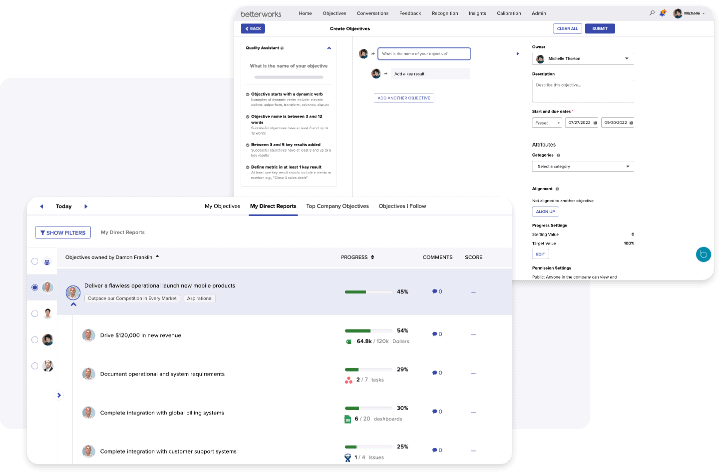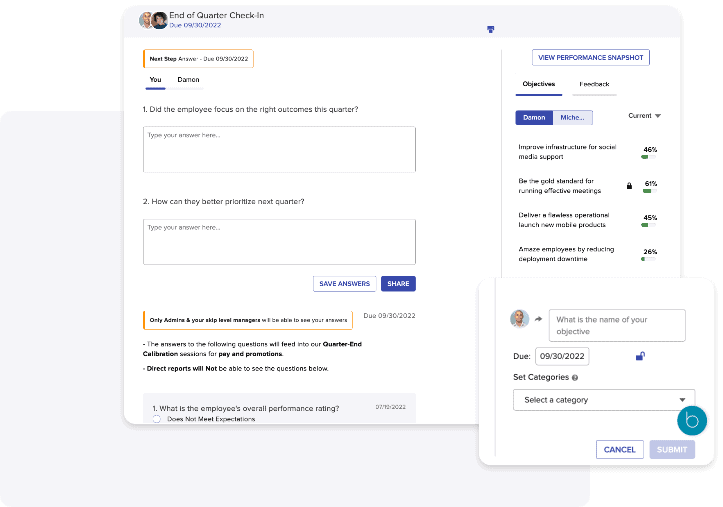Inspire Action with the Ultimate Goal & OKR Software

Orchestrate Goals with OKR Software for Execution Excellence


Boost Agility with Goal Alignment Software
Betterworks enables flexible goal setting for businesses to adapt to and flourish in an ever-changing environment. Betterworks Goals and OKRs can be customized to work with your company’s goal-setting methodology of choice, while also enabling your organization to adapt goals when business priorities change. Seamless integration with commonly used applications allows employees to quickly update goal progress without even leaving their current application.
Boost Agility with Goal Alignment Software
Betterworks enables flexible goal setting for businesses to adapt to and flourish in an ever-changing environment. Betterworks Goals and OKRs can be customized to work with your company’s goal-setting methodology of choice, while also enabling your organization to adapt goals when business priorities change. Seamless integration with commonly used applications allows employees to quickly update goal progress without even leaving their current application.

Accelerate Progress with Goal-Setting and OKR Software


Betterworks has helped us see where we are in relation to our goals, to pressure ourselves to think differently, and to be honest with ourselves.

Monica Cabrera,
Manager of Corporate Strategy at Grupo Posadas
Discover our other connected solutions that help you build high-performing teams.
Feedback
Conversations
Employee Engagement
Build trust by collecting honest feedback from your employees and develop prescriptive action plans that improve their experience.